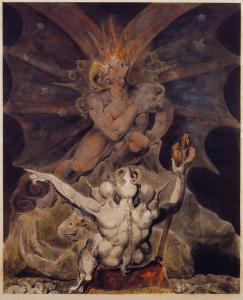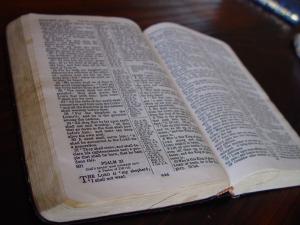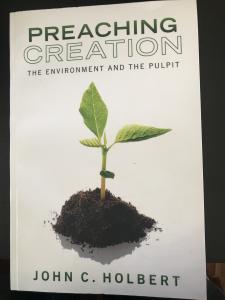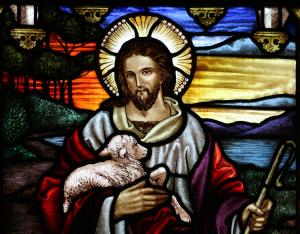 Earlier in our perusal of the enigmatic book of Revelation, I promised that I would unpack that most infamous number found in Rev. 13, 666. You would be hard pressed to find many in our culture who have not heard of this number as the very essence of mystery and evil. Just what can we make of it, and what does it have to do with the overall meaning of the book? I think the answer is a clever one, but ultimately rather transparent (if you know the game being played by John), and it s significance for the meaning of the whole. Ready?
Earlier in our perusal of the enigmatic book of Revelation, I promised that I would unpack that most infamous number found in Rev. 13, 666. You would be hard pressed to find many in our culture who have not heard of this number as the very essence of mystery and evil. Just what can we make of it, and what does it have to do with the overall meaning of the book? I think the answer is a clever one, but ultimately rather transparent (if you know the game being played by John), and it s significance for the meaning of the whole. Ready?
Here is the text of Rev.13:18: “This (that is the “name of the beast and the number of its name”—Rev.13:17) calls for wisdom: let anyone with understanding calculate the number of the beast, for it is the number of a person. Its number is 666.” The footnote of the NRSV offers the fact that “other ancient authorities (that is, other Greek manuscripts or other translations) read 616.” In case you are half asleep when John offers this verse concerning the second beast, he very pointedly tells you that this beast’s number and name are in fact a thinly disguised person, and if you “calculate” the number correctly you may discern just who that person is. The game is called gematria. Since in both Hebrew and Greek the letters of the respective alphabets have numerical equivalents, specific numbers can be turned back into the names of persons. Of course, such a game can be played over and again. Let me offer a classic English example.
If one assigns 100 to the letter A, 101 to the letter B, 102 to the letter C, and so forth, the name Hitler adds up to 666! Go on and try it; it works. Of course, your question should be: why did I start by assigning 100 to A, etc., and the answer is: because it would not work if I didn’t! Gematria is a game, after all, not some sort of occult science, and it was played in many apocalyptic texts in the last centuries BCE and the early centuries CE. I once sat in a classroom, as a teacher’s assistant in seminary, and watched as the professor, using several languages, made the name John Holbert add up to 666. This was uncomfortably funny, until he said to the class that I was not in fact the Antichrist, however much some of them may have thought I was, but was merely the victim of a clever game of gematria. So what might 666 (and 616) mean to John and his late first century community of readers/hearers?
There was a fairly wide spread myth about the Roman emperor Nero, whose death in 66CE was widely praised due to his quite terrible reputation as a hideous and lamentable tyrant. But, after some years the story began to be bruited about that Nero was not in fact dead, or if he had died, he had somehow been miraculously resurrected. And as a resuscitated and horrifying emperor still, he was amassing a huge army somewhere in the east and was preparing to reconquer Rome and rule again in all his monstrous power. The number 666 is in fact a clear, if thinly veiled, reference to this Nero myth. It turns out that the name Nero Caesar in Greek is equivalent to 616, when the letters are turned to numbers, and 666, the most common reading in several manuscripts of Revelation, because the Greek letter nu equals 50 in Greek numbers and may be added regularly to nouns as a so-called moveable nu. Thus, Nero(n) is the second beast of the book of Revelation, yet it is not so simple as that. Nero represents the evil of Roman power, so even the current emperor, Domitian, is Nero-like in his blasphemies against God and the lamb. In fact, any one who claims power against the ultimate power of God in the universe is in reality Nero reborn and is marked as 666. In that sense Hitler could very well be marked as 666, along with Stalin, Pol Pot, Mao Tse-tung, and a host of others who have claimed a power that was in fact not really theirs.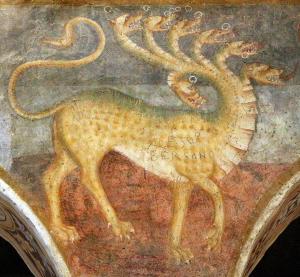
And Rev.13:16-17 provides us with another important claim. We are told in Rev.13:15 that those who would not worship the beast may be killed, and if not killed than “marked on the right hand or the forehead so that no one can buy or sell who does not have the mark, that is the name of the beast or the number of its name.” In other words, unless one follows the beast one is not able to participate in the economic work of the community. The beast controls not only the religious life of the people, but also its economic life, and those who will not follow its demands will not be allowed to buy or sell anything. Then in Rev.18, the mighty fall of Babylon (Rome) is described, and the result of its fall is economic disaster for those who have become rich as a result of the economy of the beast. This chapter is too often overlooked as a stark description of an economy propped up by the evil beast, an economy that thinks nothing of exploitation and greed. When Babylon falls, those who mourn are “the merchants of the earth since no one buys their cargo anymore” (Rev.18:11). And what is that cargo? A long list of luxury goods is given in 18:12-13, but the list ends with the terrible note that among the goods one finds “slaves, human lives.” This bestial economy is designed to make a few rich at the expense of the lives of the many poor whose only recourse in this economy is to sell themselves into slavery as their only means of survival. As one can see, the book of Revelation is hardly a book only of weird images and random visions and numbers; it is a direct assault on the exploitative economy of Rome, a dangerously subversive attack on an evil system that stands opposed to the power of a loving and demanding and universal God.
And now we may address the text of the day with this larger context in mind. Much is packed in Rev.21:1-6. But several ideas must be made especially clear. “Then I saw a new heaven and a new earth; for the first heaven and the first earth had passed away, and the sea was no more” (Rev.21:1). John’s vision makes it plain that the exploitive power of Rome is soon to end, and something new, something of God, is about to appear, in fact already exists. Roman authority is merely transient, or merely illusory, making way for the real and eternal power of God. In this new world, “the sea” will disappear. For Israel, the sea was mysterious and dangerous, and for John it is the origin place of the terrible beasts. In the new heaven and earth, there will be no more sea, hence there will be no more beasts. Rev.21:2 contains among the most famous lines in the book: “And I saw the holy city, the new Jerusalem, coming down out of heaven from God, prepared as a bride adorned for her husband.” What is most significant about this verse, and most important, is the tense of the verb. In Greek it is a “continuous present;” in other words, John means that the holy city is always coming down from heaven from God, and we must have the eyes to see it, no matter the age in which we live. This holy city is a model for the ways in which God wants the world to be, a place of peace and joy where “God will dwell with God’s people, and God will be with them; mourning and crying and pain will be no more, for the first things have passed away” (Rev.21:3-4).
What is crucial to conclude from this grand picture is that John is not talking merely about some future event, some place we see only after our death. No! Since the holy city is always coming down out of heaven, it is possible at any time and place to found and find a holy city where mourning and crying and pain are limited for all who live there. Just as John does not wish his readers/hearers to imagine that only in some pie- in-the-sky land may they discover the good economic world of God, neither does he want them to imagine that their lives of pain and suffering will only end at their death when they go to meet their God in some far-off heaven. “See, I am making all things new,” says God; God is not making all new things. The world we know and recognize can be better, can be just and righteous, can be a world that God wills now. Those who follow the lamb rather than the beast may work toward that hoped-for, newly changed world. It turns out that the book of Revelation is proclaiming the gospel, just as the writers of the four gospels attempted to do. In the face of Jesus, in the work of the slain lamb, God continues again and again to lure followers to make the world new by rejecting the would-be power of whatever beasts rise up in their pretentions to call the people of the world to join them in the exploitation of the many by the few. In John’s Revelation Jesus still calls us to justice and righteousness in the face of darkness and oppression. Will we follow the beast or the Lamb? That is always the question.
(Images from Wikimedia Commons)